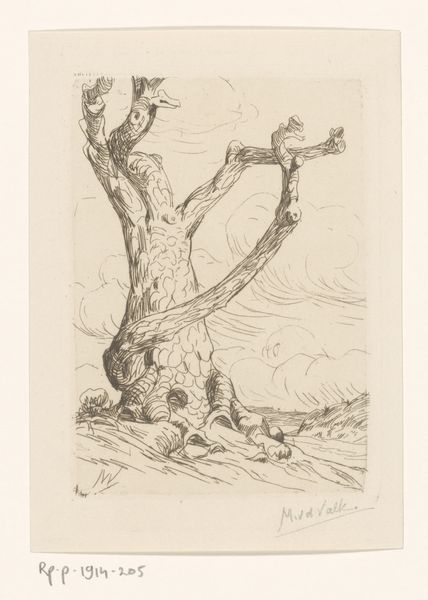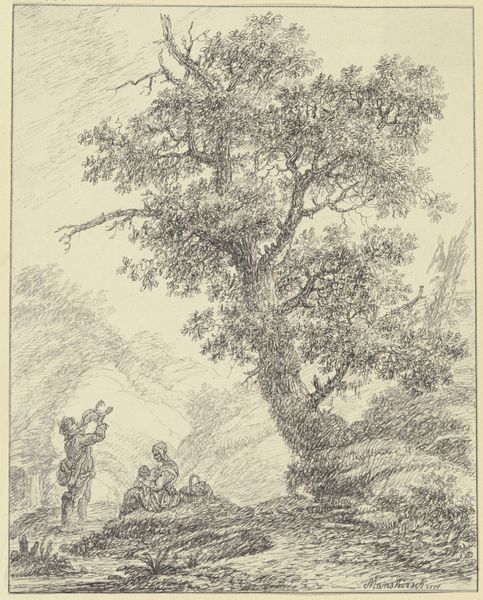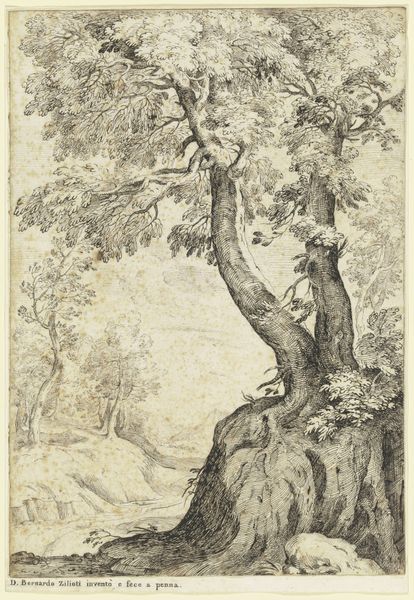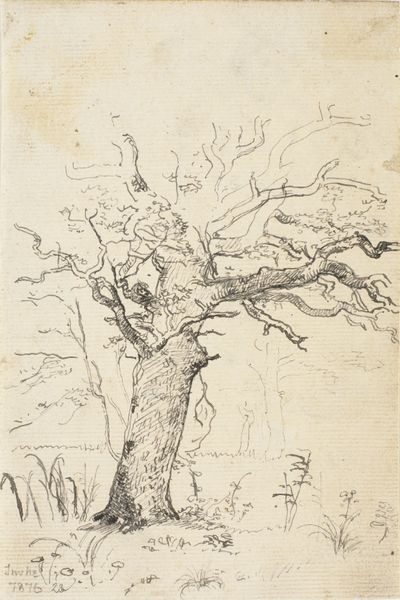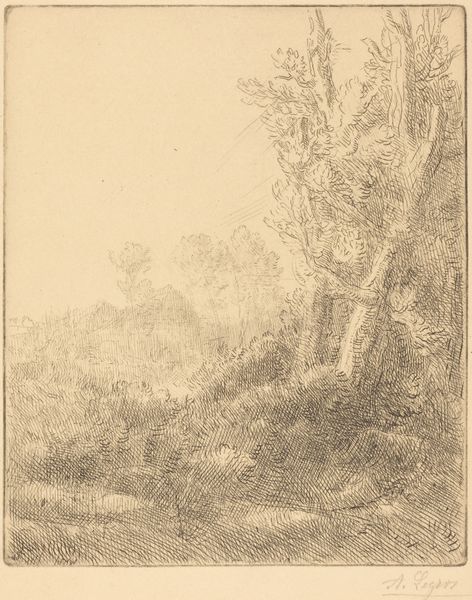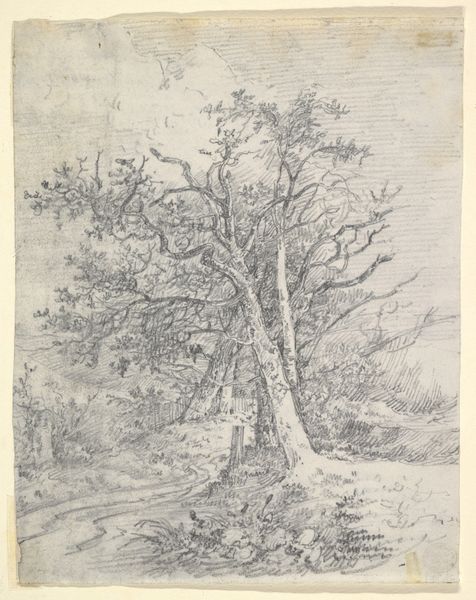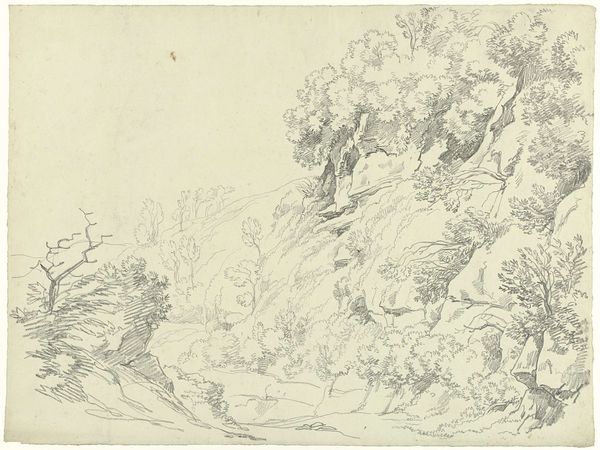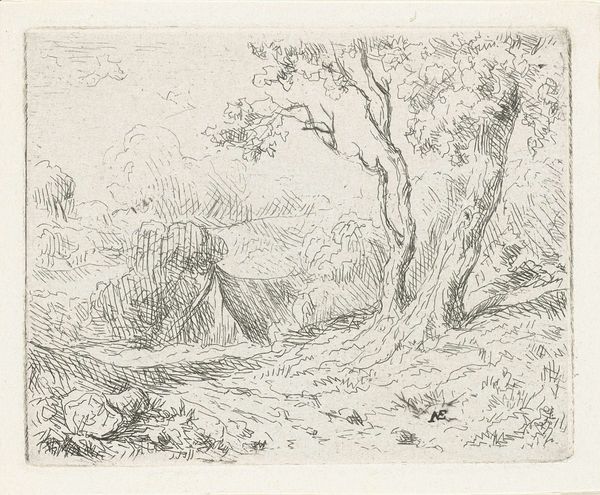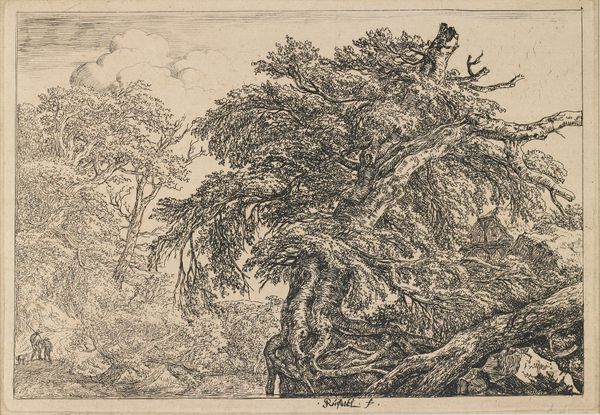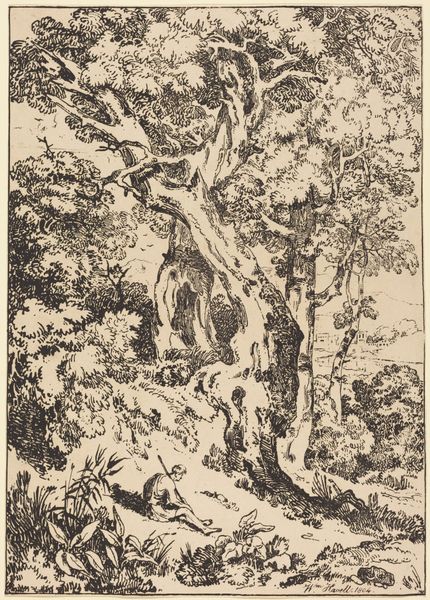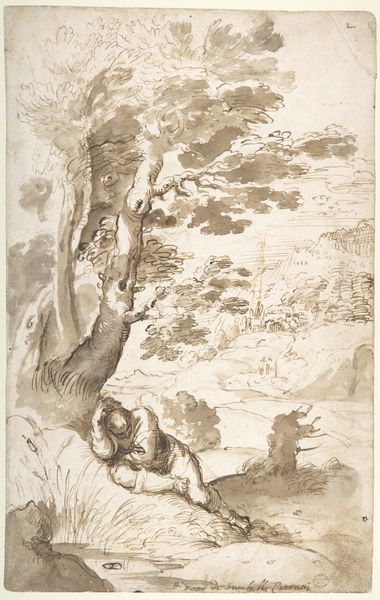
drawing, etching, ink
#
drawing
#
baroque
#
etching
#
landscape
#
figuration
#
ink
Copyright: Public domain
Rembrandt van Rijn created this print, St. Jerome beside a pollard willow, using etching, a method of printmaking. The image emerges through a labor-intensive process. Rembrandt would have covered a metal plate with a waxy ground, then drawn through it with a sharp needle. This exposed the metal, which was then submerged in acid. The acid bit into the lines, creating grooves that would hold ink. The plate would then be inked, wiped clean, and pressed onto paper. The etched lines have an immediacy, capturing the dynamism of a scene. The gnarled texture of the pollard willow contrasts with the smoothness of the distant landscape. The cross-hatching defines the forms of St. Jerome and the lion beside him. The act of printmaking allows for the democratization of images, challenging traditional notions of art as unique and precious. Ultimately, this print invites us to consider the relationship between artistic skill, manual labor, and the circulation of ideas.
Comments
No comments
Be the first to comment and join the conversation on the ultimate creative platform.

